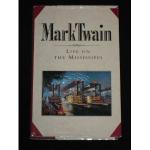It would be presumption on the part of any single man, however skilled, to contest the judgment of such a board as this.
The method of improvement proposed by the commission is at once in accord with the results of engineering experience and with observations of nature where meeting our wants. As in nature the growth of trees and their proneness where undermined to fall across the slope and support the bank secures at some points a fair depth of channel and some degree of permanence, so in the project of the engineer the use of timber and brush and the encouragement of forest growth are the main features. It is proposed to reduce the width where excessive by brushwood dykes, at first low, but raised higher and higher as the mud of the river settles under their shelter, and finally slope them back at the angle upon which willows will grow freely. In this work there are many details connected with the forms of these shelter dykes, their arrangements so as to present a series of settling basins, etc., a description of which would only complicate the conception. Through the larger part of the river works of contraction will not be required, but nearly all the banks on the concave side of the beds must be held against the wear of the stream, and much of the opposite banks defended at critical points. The works having in view this conservative object may be generally designated works of revetment; and these also will be largely of brushwood, woven in continuous carpets, or twined into wire-netting. This veneering process has been successfully employed on the Missouri River; and in some cases they have so covered themselves with sediments, and have become so overgrown with willows, that they may be regarded as permanent. In securing these mats rubble-stone is to be used in small quantities, and in some instances the dressed slope between high and low river will have to be more or less paved with stone.
Any one who has been on the Rhine will have observed operations not unlike those to which we have just referred; and, indeed, most of the rivers of Europe flowing among their own alluvia have required similar treatment in the interest of navigation and agriculture.
The levee is the crowning work of bank revetment, although not necessarily in immediate connection. It may be set back a short distance from the revetted bank; but it is, in effect, the requisite parapet. The flood river and the low river cannot be brought into register, and compelled to unite in the excavation of a single permanent channel, without a complete control of all the stages; and even the abnormal rise must be provided against, because this would endanger the levee, and once in force behind the works of revetment would tear them also away.




